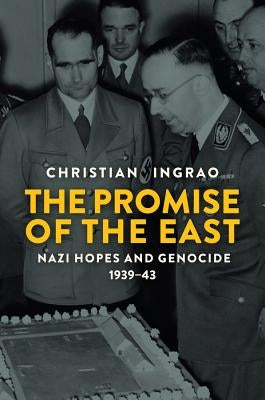Before you leave...
Take 20% off your first order
20% off
Enter the code below at checkout to get 20% off your first order
Discover summer reading lists for all ages & interests!
Find Your Next Read

How did the Nazis imagine their victory and the subsequent 'Thousand-Year Reich'?
Between 1939 and 1943, the Nazi imperial Utopia started to take shape in the conquered areas of Eastern Europe, brutally emptied of their inhabitants, who were displaced, reduced to slavery and, in the case of the Jews and a considerable number of Slavs, murdered. This Utopia had its engineers, its agencies and its pioneers (no fewer than 27,000 Germans, most of them young). It aroused fervent support. In the Thousand-Year Reich, with its borders extended by conquest, a racially pure community would soon live a life of peace and prosperity, in total harmony.
In this book, renowned historian Christian Ingrao draws on extensive archival material to shed new light on this movement and explain how it could prove so appealing, examining the coherence and the inner contradictions of the activities undertaken by the different institutions, the careers of the women and men who played a part in them, and the ambitious plans that were drawn up. Ingrao adopts a social anthropological point of view to investigate the emotions aroused by the Nazi dream, and describes not just the hatred and the anxieties it fed on but also the joys and expectations it created - two sides of a single reality. As we learn from the terrible violence unleashed across the region of Zamośc, on the border between Poland and Ukraine, the hopes of the Nazis became a nightmare for the native populations.
This important work reveals an aspect of Nazism that is often overlooked and greatly extends our understanding of the general framework in which the Holocaust was realized. It will find a wide audience among students and scholars of modern German history and among a broad general readership.
Christian Ingrao is one of the leading experts on the history of Nazism. Currently a researcher at the Centre national de la recherche scientifique (CNRS), he was director of the Institut d'histoire du temps présent (IHTP) from 2008 to 2013. His previous books include Believe and Destroy: Intellectuals in the SS War Machine (Polity, 2013).
Thanks for subscribing!
This email has been registered!
Take 20% off your first order
Enter the code below at checkout to get 20% off your first order